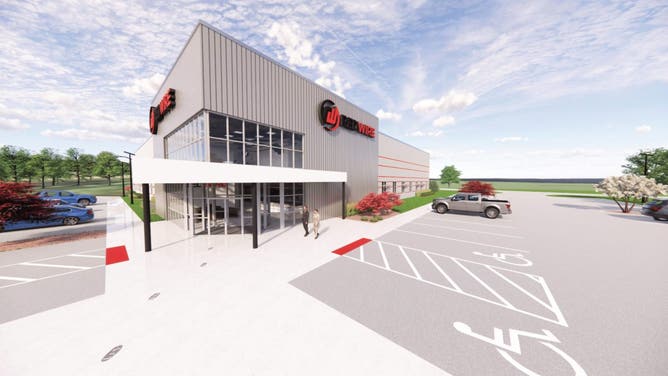New biotech facility on Earth will help develop microgravity research supporting human spaceflight
The new facility in Indiana will include a mission operations control center where scientists can speak to astronauts working on their research in space.
3D printers helping build tools, infrastructure in space
COO Andrew Rush discusses how his company Redwire Space has developed 3D printers for astronauts on the International Space Station.
At any given time, hundreds of research experiments are ongoing about 250 miles above Earth conducted by astronauts living in space, and with growing plans for private space stations, there will be even more science ongoing in space in the near future.
Redwire Corp. announced Tuesday it plans to open a 30,000-square-foot microgravity payload development facility for medical and academic researchers to develop medicine, disease treatment and technology for the fast-growing microgravity research industry.
Rich Boling, vice president for corporate advancement at Redwire’s space manufacturing and operation business unit in Indiana, told FOX Weather what a researcher or visitor might see when walking into the new facility.
"Right away, when you come out the front door, prominently featured is our payload operations control center … it's a mission control," Boling said.
It used to be all communications with astronauts in space happened on a NASA campus, but Redwire can talk directly to the astronaut person-to-person while they're aboard the International Space Station, working with Redwire research and production devices.

An artist rendering of the Redwire microgravity payload development facility in Floyd County, Indiana. (Image credit: Redwire Corp.)
Right now, there are about 10 Redwire payloads on the International Space Station, and Boling said nearly every cargo supply mission sent up to the ISS includes something from Redwire.
The new facility will be in the Novaparke Innovation and Technology Campus in Floyd County, Indiana. Boling said with the booming space manufacturing interest, they have outgrown their current building in Greenville, Indiana.
Redwire is no stranger to making things for space or in space.
The company acquired Made In Space in 2020, which printed its first parts in space nearly a decade ago.
In 2021, Redwire acquired Indiana-based Techshot, a space medical research and manufacturing company founded in 1988 with decades of space research experience.
The late astronaut John Glenn worked on a Techshot experiment during his 1998 space shuttle mission.

In this NASA file photo astronaut Christina Koch, Expedition 60 flight engineer, works with the BioFabrication Facility made by Techshot, now part of Redwire Corp. (Image: NASA)
(NASA)
It's not just hardware like 3D-printed wrenches and toilet parts the astronauts are making on the ISS now.
"In a few days, we'll be doing a 3D manufacture of a human knee meniscus in space for a paying customer," Boling said. "We have other things lined up related to blood vessel printing, cardiac prints coming out this year," Boling said.
There is growing interest in space-based research from pharmaceutical companies because of the stability of a microgravity environment for growing uniform protein crystals.
For example, the cancer treatment drug Keytruda by Merck requires crystal shapes that must be the same way every time. On Earth, Keytruda was created using three different crystals in different shapes and sizes. An experiment on the ISS found that Merck could make Keytruda with one controlled crystal.
"You take away gravity, and now that crystal can sit in the middle of that chamber and just grow without the influence of sedimentation," Boling explains.
The company said it wants to support the demand from commercial companies and researchers focused on pharmaceuticals, disease treatment and technology for human spaceflight.
Researchers using the new microgravity payload development facility will have a good chance of seeing their space research.
Redwire has Space Act agreements with NASA and the ISS National Lab, allowing NASA-funded researchers to get on a spaceflight manifest.
Redwire is also a partner of Orbital Reef, a private space station in development by Blue Origin and Sierra Space. It's one of several private stations in low-Earth orbit in the works in the next decade, opening up more space for microgravity research.
Boling described this time as the "golden age of spaceflight," with more opportunities for people in science but also across all fields to have a role in exploration.
Construction on the new facility is expected to begin in the fourth quarter of 2023.
